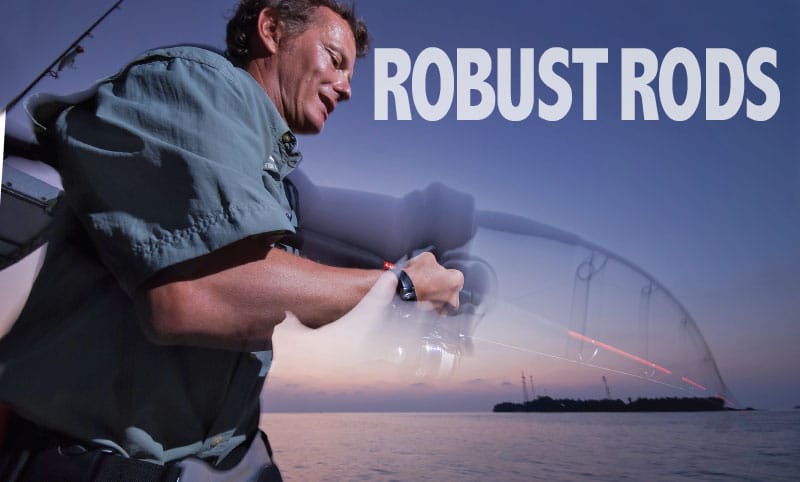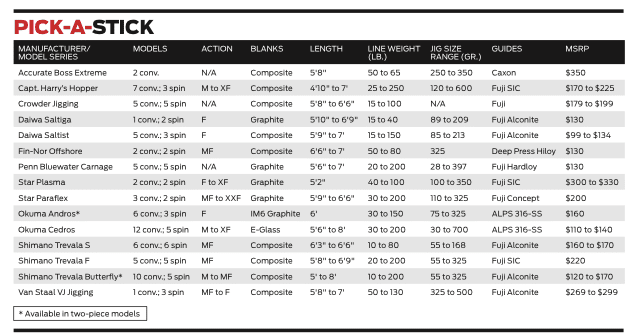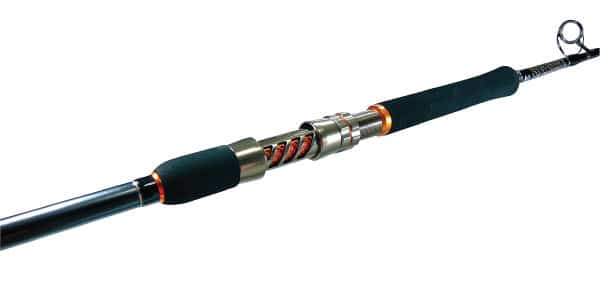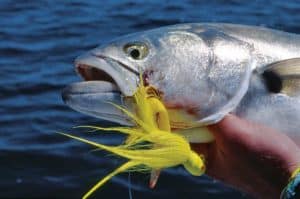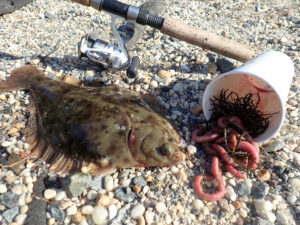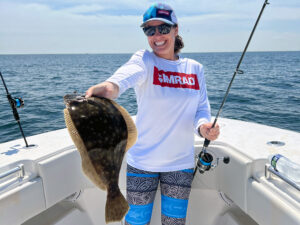The first time I laid my hands on a jigging outfit, I admit to feeling a bit sheepish. I was in southwest Florida dropping metal jigs alongside wrecks for groupers and other reef fish. I knew full well there were likely some bruisers around the structures, and I was skeptical of these short, thin spinning rods.
But I was in for quite a surprise. While no groupers were caught that day, the amberjack were thick, and time after time, I was simply amazed by the pulling power of these rods. It was the kind of day you’d call an eye-opener.
Finely Tuned Blanks
That was six years ago, and not only did I gain an education on the basics of metal jigging techniques (which can be quite a culture shock in and of itself), I had a revelation on modern tackle — basically, it ain’t your daddy’s sport anymore.
Jigging rods have been at the forefront of modern tackle evolution. That’s because deep jigging almost exclusively involves the use of braided lines, which have greatly influenced rod design and function in several capacities.
At first glance, these rods don’t look like much. They’re generally short (6 feet is about the average length) and thin in diameter. Yet, they’re incredibly strong and lightweight. But, more to the point, they’re designed literally to work differently than fishing rods of 20 years ago.
“In the old days of mono fishing, you needed faster, stiffer rods because of mono’s stretch,” explains Robby Gant, senior product manager at Shimano, which pioneered deepwater jigging in the United States in the mid-2000s with its Butterfly tackle system. “But now, you don’t need that extra-fast, super-stiff rod. With these rods, we call it the bendy concept. The rods are really designed to bend down, making it much more comfortable on the angler.”
This “bendy concept” is more formally described as a parabolic (or U-shaped) curve — or in fish-speak, being doubled over! The rod now absorbs all the blows (where mono used to absorb much). And that’s a big reason why the blanks of so many jigging rods today are a composite design.
“We call the blank used on our Van Staal rods a Powerlite Construction,” says Chris Littau, director of saltwater brands at Zebco, parent company of Quantum, Fin-Nor and Van Staal. “It’s a composite of glass and graphite. We’ve figured out how to layer them in such a way to get the most out of the strengths of each material. The glass is extremely strong but very slow in action. The graphite has tremendous action and is really strong, but it’s too brittle on its own, in our opinion. The two combined in the right configuration gives you ultimate power and strength, and gives you the faster actions to work heavy metal jigs all while staying lightweight.”
Of course, successful deepwater jigging is not all about the rod. It’s highly dependent on having a balanced outfit, or “system,” that comprises rod, reel, line and jig. All must be carefully matched and optimized. Still, the rod is the focal point in the jigging system, charged not only with fighting the fish but imparting the proper action to the jig.
“And let’s face it,” says Cameron Hughes, product manager at Penn, “vertical jigging is a workout, and you need a good rod that is light, balanced, and comfortable in your hand and under your arm.”
Penn’s Carnage series was introduced last year, following in the footsteps of its popular predecessor, the Torque line. The rod makes use of a lightweight graphite blank, and Hughes says its versatility — especially in the spinning models — allows it to act not only as a jigging rod but a multipurpose tool. “You can be vertical jigging in 200 feet of water one day and then be sight-casting for cobia the next day with the same rod.”
Roman Sperkacz, general manager at Capt. Harry’s Fishing Supply in Miami, also says that his company’s Hopper series of jigging rods are being used for other types of fishing, as well. The longer, 6½- to 7-foot spinning models in the family are being used increasingly by anglers chunking or live-baiting yellowfin tuna, he says.
Piecing It Together
But at the core, these rods are designed for the rigors of deepwater jigging — and, as such, every component on the rod must be built tough.
Take reel seats and guides, for instance. They are extremely important, and manufacturers have made great strides in making them better for deep jigging.
“You need a very hard insert material in your guides that will withstand the pressures and friction of braided line,” says John Bretza, director of product development at Okuma Fishing Tackle. “We use zirconium [guide inserts] for all of our jig rods because it is an extremely hard insert material that works perfectly with braids.”
Guide placement is important too. “The lead guide on your heavier conventional jigging models needs to be closer to the foregrip to decrease the angle of the line coming off the reel to the lead guide,” says Hughes. “No one likes the line touching their thumb or cutting into the grip while fighting a large fish.”
And speaking of grips, this is also an area that’s seen terrific innovation over the past few years.
“One of the things that we have incorporated into many of our jigging rods is a split-grip configuration, which offers more comfort,” says Bretza.
A split fighting butt exposes the glossy-finished rod blank between the EVA foam, which “allows the rod to slide easily over your clothing when jigging,” Bretza says. “Without this style of configuration, a foam grip will catch on your clothing, and can rub on your body causing discomfort.”
Or worse, result in a lost trophy that never should have gotten away.
